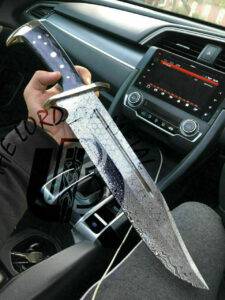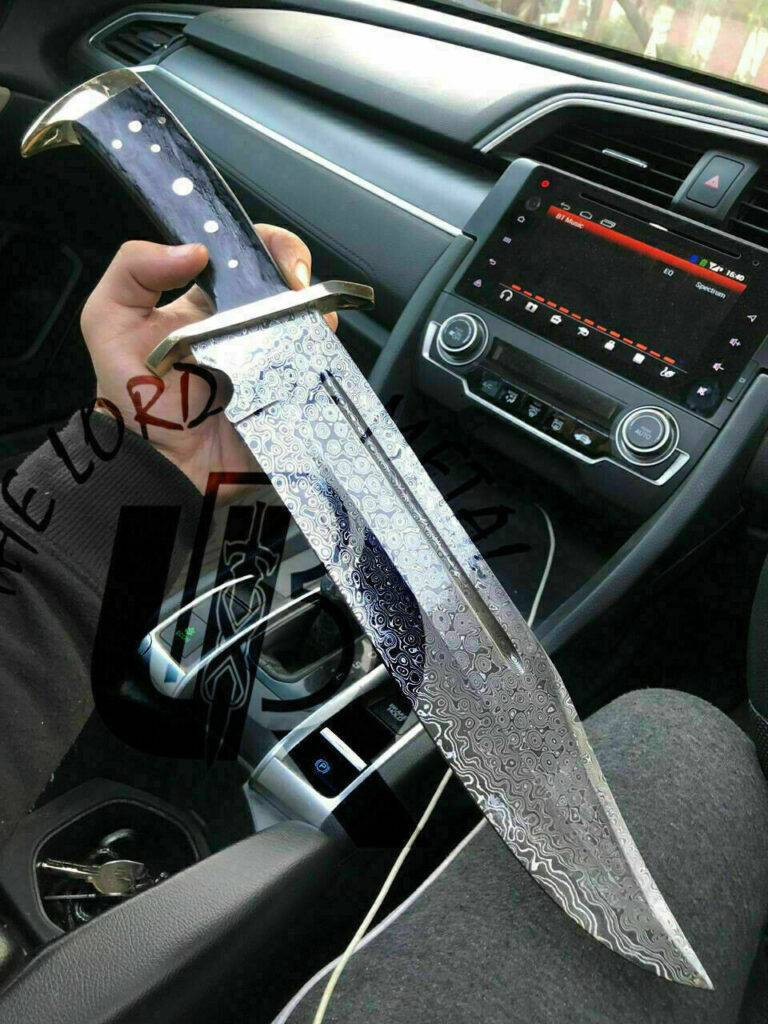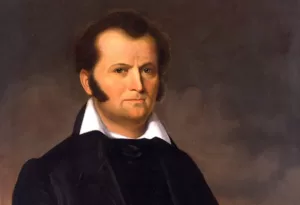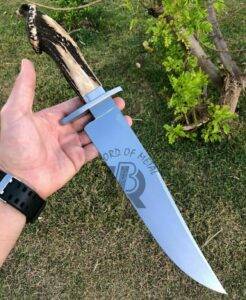
The Evolution of the Bowie Knife: From Frontier Tool to Iconic Weapon

Few blades in the world possess the legendary status and enduring appeal of the Bowie knife. With its distinctive design and versatile functionality, the Bowie knife has a rich history that captures the spirit of the American frontier. In this article, we will embark on a journey through time to explore the fascinating evolution of the Bowie knife, tracing its transformation from a utilitarian tool to a timeless symbol of craftsmanship and American heritage.
The Birth of the Bowie Knife
The Bowie knife owes its name and iconic design to the legendary American frontiersman Jim Bowie. Born in 1796 in Logan County, Kentucky, Jim Bowie would play a pivotal role in the knife’s history. The Bowie knife features a large, fixed blade with a clipped point, a double-edged design, and a substantial guard, making it a formidable tool for both combat and utility purposes.
Early Bowie Knives: Utility and Survival
In its earliest form, the Bowie knife was a versatile tool that served multiple purposes on the American frontier. Its primary function was as a hunting and skinning knife. The design allowed frontiersmen like Jim Bowie to efficiently process game and ensure their survival in the wilderness. Its robust construction made it an ideal choice for tasks that demanded a durable and reliable cutting tool.
The knife’s design included a curved clip point, providing a well-balanced blade that was both sharp and versatile. The guard on the hilt offered hand protection, crucial for both combat and handling game. Early Bowie knives often had blade lengths ranging from 9 to 15 inches, catering to various needs of frontiersmen.
The Sandbar Fight and the Bowie Knife’s Emergence
The Bowie knife’s journey to prominence took a significant turn during the infamous Sandbar Fight of 1827. Jim Bowie was at the center of this violent brawl, and he used a large knife with a clipped point to defend himself. His effective use of the knife during this deadly encounter became a part of the legend, solidifying the knife’s reputation as a formidable weapon. This pivotal moment marked the emergence of the Bowie knife as we know it today.
The legend of the Bowie knife’s effectiveness in self-defense and combat began to spread, further contributing to its popularity. The knife was gaining recognition not just for its utility but for its role as a symbol of rugged individualism and frontier heroism.
Design Adaptations and Regional Variations
Over the years, the Bowie knife underwent various design changes and regional adaptations. Different knife makers and regions put their unique spin on the classic design, resulting in a wide range of Bowie knife variations. These regional distinctions reflect the craftsmanship and aesthetics of different eras and locations.
For example, the Texas Bowie knife is known for its large, heavy blade and intricate embellishments, often showcasing ornate handles and finely detailed hilts. In contrast, the Arkansas toothpick features a longer, slender blade that made it an ideal weapon for thrusting, while the California Bowie showcases a more stylized and ornate design.
These regional variations highlight the Bowie knife’s ability to adapt to different needs and preferences while retaining its core characteristics—specifically, a strong, sharp blade and a distinctive clipped point.
The Civil War and Beyond
The Bowie knife found itself in the hands of soldiers during the American Civil War, serving as both a sidearm and a utility tool. Its durability and versatility made it a practical choice for the rigors of military life. Soldiers appreciated the Bowie knife for its ability to perform various tasks, from cutting food to clearing brush, making it a valuable addition to their kit.
After the Civil War, the Bowie knife continued to be used in various capacities, from hunting and camping to self-defense. It maintained its status as a reliable and functional tool while gaining further recognition as a symbol of the American frontier spirit.
The Bowie Knife in Pop Culture and Collecting
The Bowie knife’s rich history and iconic design have cemented its place in American pop culture. Its association with legendary frontiersmen and historical events, such as the Battle of the Alamo, contributed to its enduring appeal. The Bowie knife has been featured in literature, films, and television, making it a symbol of American heroism and the spirit of the Wild West.
Today, Bowie knives are highly sought after by collectors, outdoor enthusiasts, and history buffs. Collecting Bowie knives has become a passionate hobby, and antique and custom-made Bowie knives are considered valuable and highly collectible. Whether they are used for practical purposes or proudly displayed as collector’s items, Bowie knives continue to be cherished for their historical significance and rugged beauty.
Related
Unique Blades Runner
Leave a Replay
About Me
Usama Enterprises was established from the passion of being outdoors, understanding the importance of having the right gear for every adventure and most importantly being able to source and deliver quality products at the best possible prices. Usama Enterprises is proudly Pakistani owned and operated with a focus on closing the gap in the tactical and outdoor market. We strive to bring our customers the biggest range of leading brands at the best prices available!
Usama Enterprises LTD
Recent Posts
Follow Us
Sign up for our Newsletter
Click edit button to change this text. Lorem ipsum dolor sit amet, consectetur adipiscing elit


